First Timer’s Guide to Rome
If Italy is your next destination, then Rome is sure to be high on your bucket list. The good news is that Rome is an easy city to navigate for first time visitors checking out the many world-famous sights.
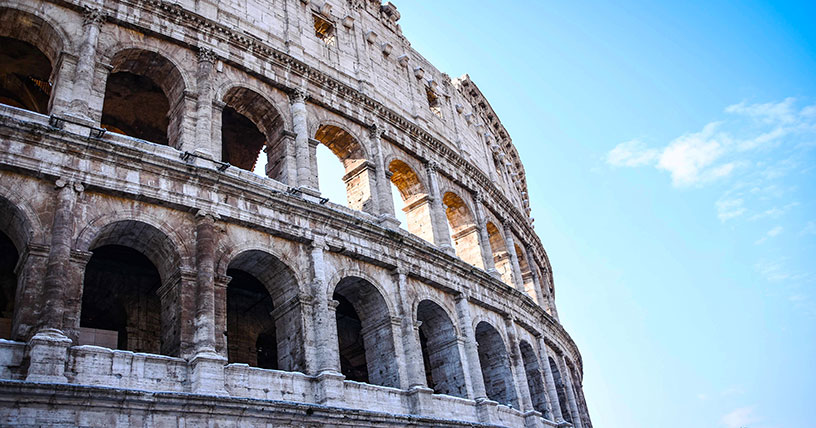
My best advice for first timers however is don’t just tick off your bucket list items. Take the time to soak in the vibrant aura of Rome.
Rome is the perfect city to wander as it’s easy to find your bearings with sightings of historical structures at almost every turn. There are also clear and frequent signage pointing you in the right direction. And if you do take a wrong turn, you’re sure to come across something beautiful – and probably hundreds, even thousands, of years old.
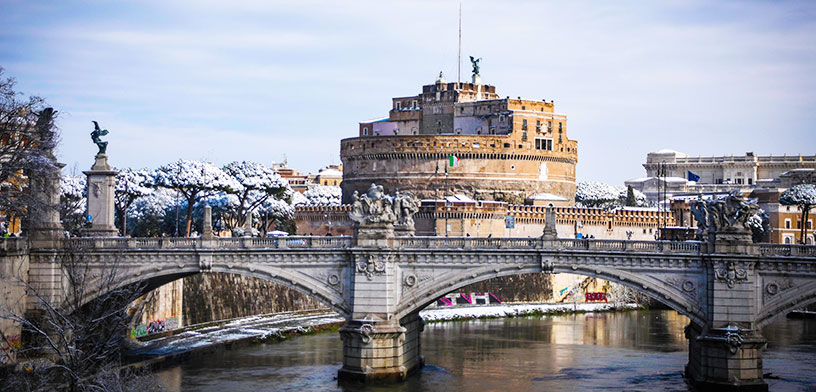
Best Time to Visit Rome
While the summer months are a glorious time to visit Europe, Rome can get ridiculously hot and humid in summer – not to mention crowded and expensive. Rome in July and August is when the heat just seems to sit over the city and you are wiping sweat off your brow every two seconds.
The best time to visit Rome is in the shoulder months of April-May or September-October. It will still be warm during the day and you’ll most likely get sunny, clear skies. Accommodation will be almost half the price of the high season.
How Much Time Do You Need in Rome
Plan a minimum of three full days in Rome. There are dozens of key sights to see and they’ll be a lot more memorable explored slowly rather than simply stopping by, taking the obligatory selfie, and checking them off your list.
You can also use Rome as a base to see other cities and attractions such as Naples or Pompeii. If you plan to explore further afield using Rome as a base, add at least another two days to your stay to explore southern Italy.
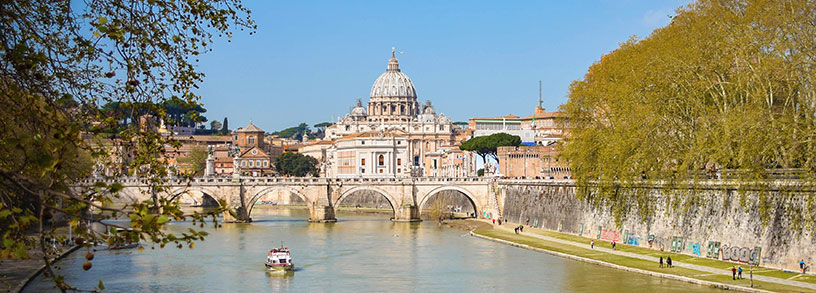
Getting Around
Rome is served by an efficient metro system – however Rome is best explored on foot. Tickets cost €1.50 (~$2.40 AUD) or you can buy 24 or 48 hour passes starting from €7 (~$11 AUD). You can also use one of the hop on-hop off bus services to get around.
Rome is also well connected to other Italian cities by the Trenitalia trains (both slow and high-speed trains) and buses, such as Flixbus.
To get to and from Rome’s airports, there are a multitude of bus companies offering transport. Rome has two airports – Fiumicino and Ciampino. Fiumicino services many European and international destinations. Ciampino is largely used by low cost airlines servicing European destinations. Bus tickets start from €5 (~$8 AUD). It’s best to buy airport bus tickets online or at ticket counters the day before departing Rome.
A train also services Fiumicino Airport and costs €15 (~$24 AUD).
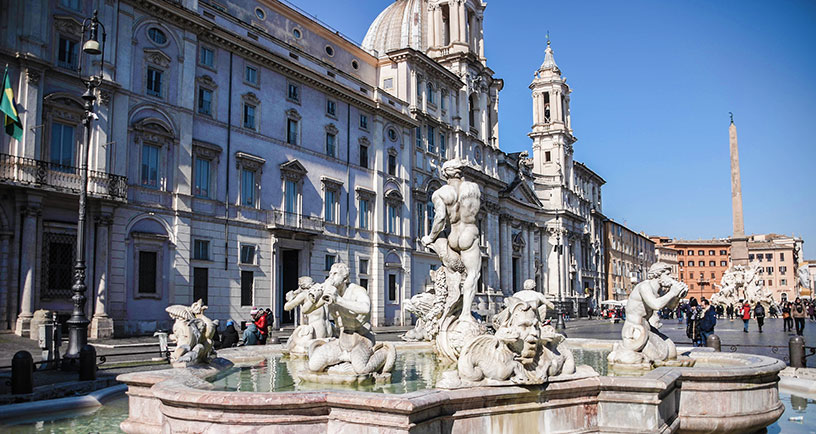
Top Things To Do In Rome
If it’s your first time in Rome, you’ll have a lot of bucket list sites to tick off your list. A plan of attack is essential. There are a dozens of sites equating to a lot of expensive entry tickets – and also long queues!
Travellers on a tight budget may want to figure out what is essential to see the inside of, and what can be seen almost just as good from the outside.
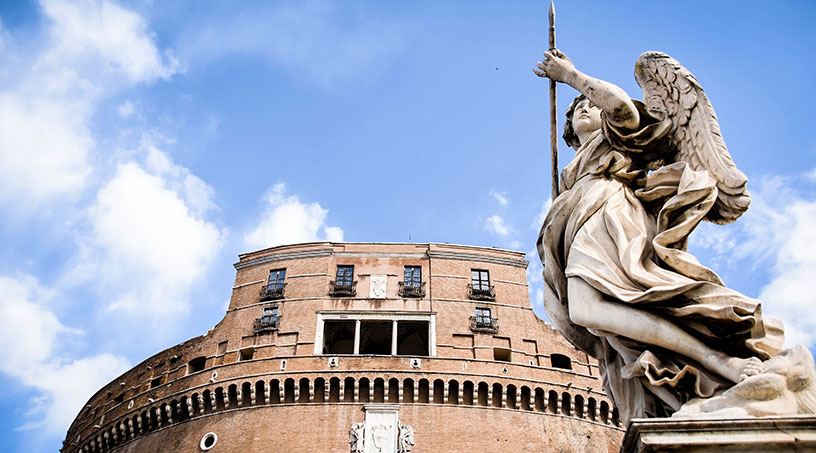
The Colosseum and Roman Forum
Your first port of call should be the Roman Forum and Colosseum. It’s not essential to go inside either of these as you can get a pretty good view from the outside.
If you choose to go inside, get there as soon as the ticket office opens at 8.30am. You can buy a combined ticket for the Roman Forum, Colosseum and Palatine Hill for €12 (~$20 AUD). Queues are generally shorter at the Palatine Hill entrance.
The Pantheon
From the Colosseum, head across to the Pantheon. The Pantheon was once a temple, and is now a church – and is nearly 2,000 years old! It’s the best-preserved building from ancient Roman times. You don’t need to spend much time at the Pantheon, but it’s definitely worth a look. The good news is that it’s free to take a look inside.
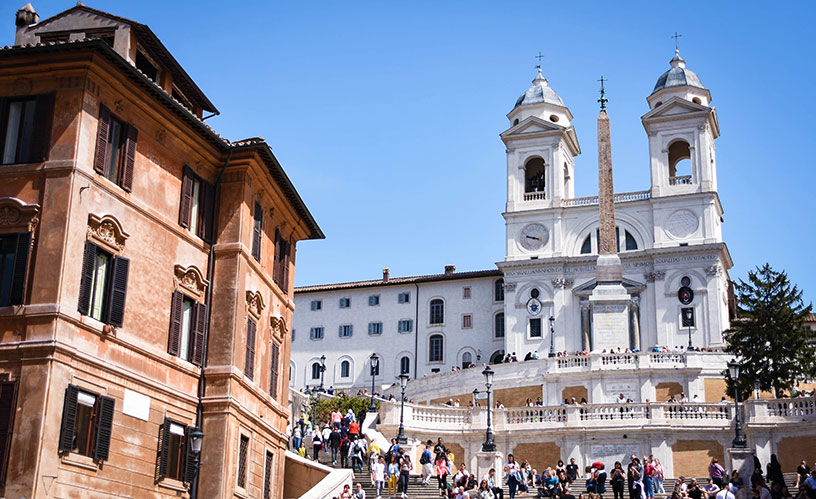
Fountains and Steps
The Spanish Steps, Trevi Fountain and Piazza Navona are easy and quick photo stops that you can do at any time as you’re wandering the streets of Rome.
Castel Sant’Angelo
Castel Sant’Angelo is next up and you can get a pretty good view of the fortress from the outside. Checking out the inside costs €10.50 (~$17 AUD).
Make sure you see the fortress from a distance as well – it’s particularly photogenic seeing the castle against the backdrop of the river.
Vatican City
On the west bank of the Tiber River lies Vatican City. St Peter’s Basilica and the Vatican museums, including the Sistine Chapel, are located here.
Entry into St Peter’s Basilica is free but get there early to avoid a queue. The basilica opens at 7am. Remember to wear clothing that covers your shoulders and knees (no singlets or short shorts) or bring something with you.
The Vatican Museums open at 9am Monday to Saturday. The Vatican Museums are closed on Sundays.
Gianicolo Hill
From Vatican City, head over to the Trastevere district. This is a great place to enjoy a meal or a coffee as it’s cheaper than the city centre. After your belly is full, walk up to Gianicolo Hill for a panoramic view across Rome. You can also get a great view of the city from Aventine Hill.
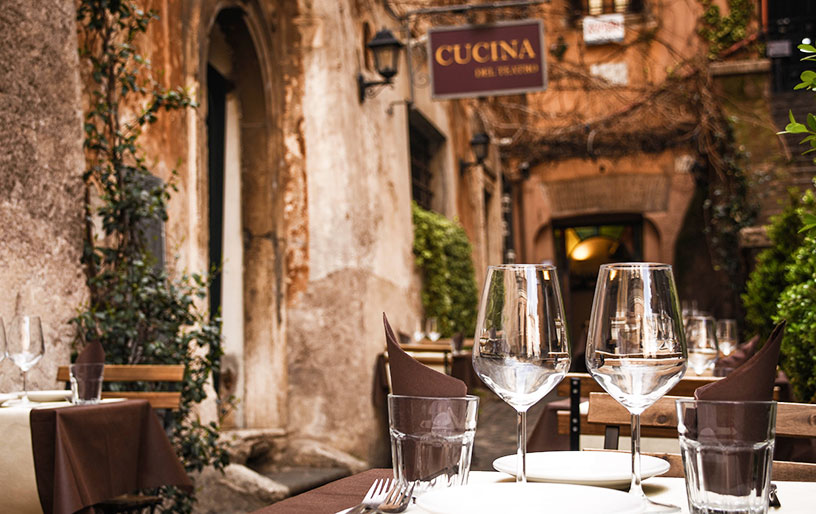
Off the beaten path sites
If you have time, get away from the well-beaten tourist sites and visit some of the lesser-known ones. My favourites are the ruins of the ancient city of Ostia, the catacombs and the aqueduct ruins.
Ostia Antica Ruins
The ancient city of Ostia lies 25 kilometres south west of Rome’s centre. It’s believed Ostia was established around 620 BC, and it used to be a thriving harbour city. It was abandoned in the 9th century.
Today, you can walk past the ruins of houses, public baths, temples, taverns, warehouses and markets, and imagine what the city would have looked like thousands of years ago.
To get there, take the Line B metro to the Pyramide station then head over to the Roma Lido commuter train station (it joins onto Pyramide and you don’t need to buy another ticket). Hop on the commuter train and get off at the Ostia Antica station. The ruins are 300 metres away from the station at the other side of a footbridge. The entry fee is €12 (~$20 AUD).
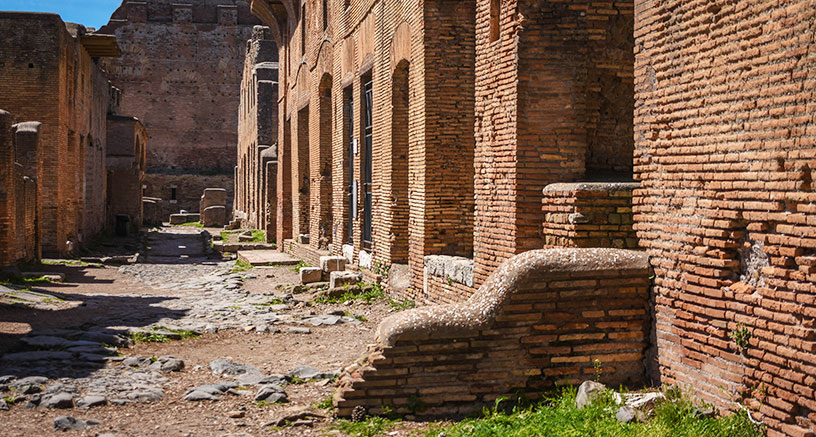
Aqueduct
Parque del Acquedotti is home to the ruins of a huge Roman aqueduct. Entry is free into the park and you can roam next to the aqueduct for kilometres. While entrance to the park is free, it will cost you a return metro ticket (€3/$4.80 AUD) to get to the park unless you fancy a 9km walk each way from the centre.
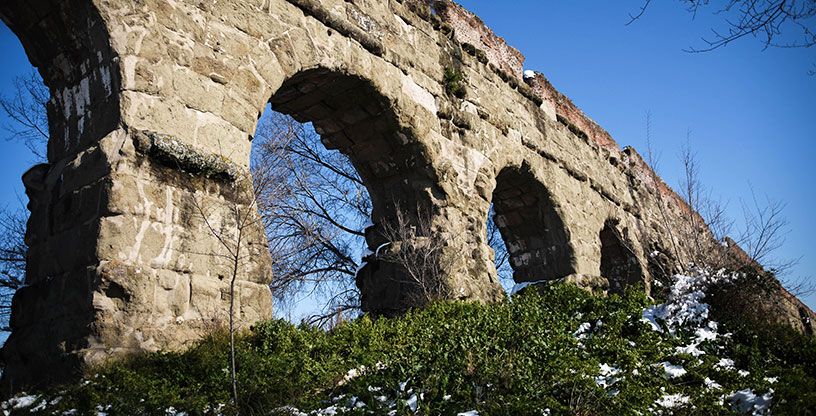
To get there to the aqueduct from Termini Station, catch the Line B metro to Subaugusta station then take the 15 minute walk to the park along Viale Tito Labieno.
The longest stretch of the aqueduct that remains mostly intact is located on the left-hand side of the park as you approach from the metro station.
Catacombs
There’s four catacomb (underground burial place) complexes in Rome – St. Callixtus, St. Domitilla, St. Priscilla and St. Sebastian. Check opening times before you go as some are closed on Mondays and Wednesdays.
Day Trips from Rome
Rome serves as an excellent base to visit nearby sights. The most popular day trips from Rome are to Naples, and Pompeii, the city preserved under a layer of ash and lava after Volcano Vesuvius erupted in the year 79 AD.
You can also visit the nearby beaches of Sperlonga or Santa Severa, or head along to the impressive 16th century Villa d’Este.
Things You Should Know
- Rome is best explored on foot. You never know what beautiful buildings you’ll come across next in your pedestrian adventures.
- Some attractions in Rome are closed on Sundays, Mondays and Wednesdays. Make sure you check opening hours for any sights you want to go inside of and plan accordingly.
- Rome’s metro network is easy to navigate. Tickets cost €1.50 (~$2.40 AUD) per trip or you can buy a 24 hour ticket for €7 (~$11 AUD).
- Most of the key sights are located on the Termini Train Station (Rome’s central station) side of the Tiber River. Termini makes for a good landmark as many of the sights fan out from there and there’s lots of budget accommodation options in the area.
- If you’re on a tight budget, avoid any restaurants, cafes and gelatarias around the key tourist attractions such as Trevi Fountain and the Colosseum. You’re better off heading into neighbourhoods such as Trastevere and Testaccio for dining and drink options.
- Rome is a year-round destination and you’ll always encounter crowds of people. However, it gets extremely busy in July and August, but also very hot and humid. The best time of year to travel in central and southern Italy is in the shoulder months of March, April, September and October. Accommodation is also cheaper over the winter and shoulder season months.
Lisa Owen is a pint-sized Australian following her dreams to travel to as many places as she can, and loves to share her photography, travel hacks, hiking adventures, and food discoveries along the way. At last count, she has travelled to more than 70 countries in between working in public relations and discovering hidden gems in Australia's great outdoors. Instagram: @thelittleadventurer. Facebook: The Little Adventurer Australia.
The views, opinions and positions expressed by the author and those providing comments are theirs alone, and are meant as travel inspiration only. They do not reflect the opinions of Cover-More Insurance. You should always read the PDS available from your travel insurance provider to understand the limits, exclusions and conditions of your policy and to ensure any activities you undertake are covered by your policy.